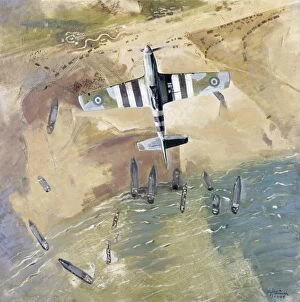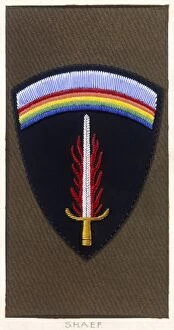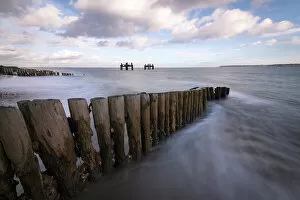D Day Collection (#8)
"D-Day: The Turning Point in World War II" On June 6, 1944, the fate of Europe hung in the balance as British and Canadian troops stormed Juno Beach
For sale as Licensed Images
Choose your image, Select your licence and Download the media
"D-Day: The Turning Point in World War II" On June 6, 1944, the fate of Europe hung in the balance as British and Canadian troops stormed Juno Beach. This pivotal moment marked the beginning of Operation Overlord, a daring plan to liberate France from Nazi occupation. Meanwhile, on Omaha Beach, American forces faced fierce resistance but managed to secure a foothold on French soil. As the invasion unfolded, supplies poured ashore to support the advancing troops. Amongst them was a Piper L-4 Cub aircraft adorned with D-Day colors – a symbol of courage and determination. Nearby, at Omaha Beach's American Cemetery, rows upon rows of white crosses stood as solemn reminders of those who made the ultimate sacrifice for freedom. Glider reinforcement teams played an essential role in bolstering ground forces during D-Day. Their arrival brought much-needed reinforcements and equipment to aid in overcoming German defenses. In the skies above Omaha beach, bomber planes provided crucial air support to infantry units battling their way inland. The U. S Air Force Republic P-47 Thunderbolts soared over Omaha beach with unwavering resolve. These brave pilots braved enemy fire while providing cover for soldiers below - a testament to their unwavering commitment. Across the English Channel at Queen Beach - Sword Area, British troops landed amidst heavy opposition but pressed forward undeterred by danger or adversity. Simultaneously, American forces launched an assault that would forever change history's course. From a bird's-eye view came an awe-inspiring sight; landing craft filled with allied troops making their way towards Normandy's shores under protective barrage balloons hovering above them like guardians of liberty. In this monumental operation even locomotives had their part to play; USA S160 2-8-0 locomotive No. 1606 coupled itself onto an ambulance train ready to transport wounded soldiers away from harm's reach.





